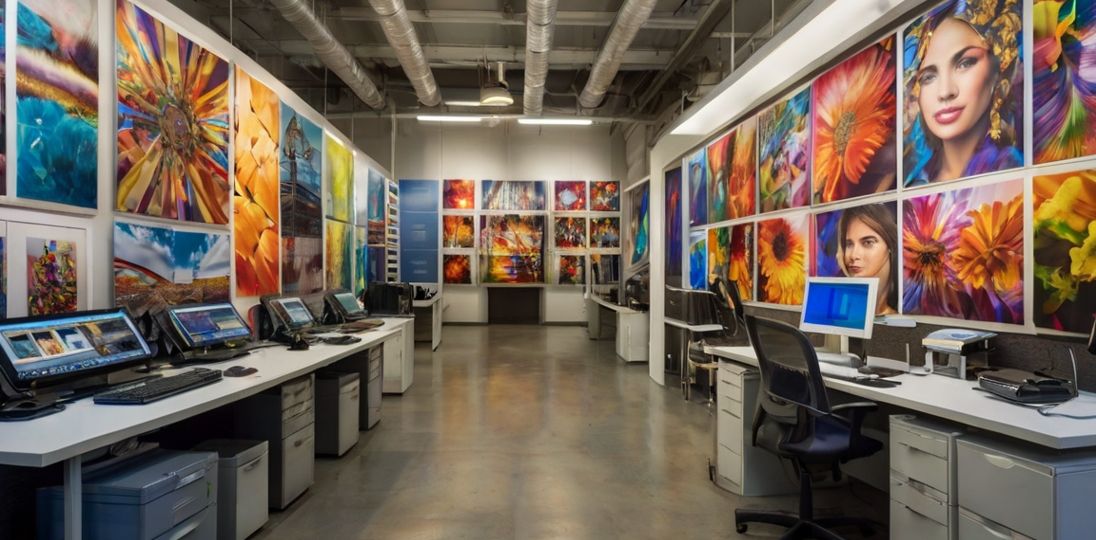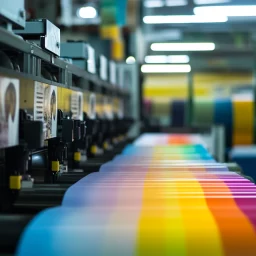
Corporate printing is no longer limited to simple paper and ink processes. With advancements in technology, businesses now have access to tools that can streamline operations, personalize output, and reduce environmental impact. Companies must stay ahead by embracing these innovations to remain competitive, sustainable, and efficient in their printing strategies.
Sustainable Printing Solutions
In today’s eco-conscious world, businesses are under pressure to adopt more sustainable practices. Sustainable printing solutions have emerged as a way to minimize the environmental footprint of corporate operations without compromising quality.
Eco-friendly materials
One of the most notable advancements in sustainable printing is the use of eco-friendly materials. Recycled paper, biodegradable inks, and non-toxic toners are now widely available. According to a report by the International Journal of Environmental Research , using 100% recycled paper can reduce energy consumption by up to 60% and water usage by 50% compared to virgin paper production.
Energy-efficient printing equipment
Modern printing equipment is designed with energy efficiency in mind. Energy Star-certified printers use less electricity, helping companies save on operational costs while contributing to environmental sustainability. Additionally, these devices often come with sleep modes and automatic shut-off features, reducing energy consumption during idle times.
Carbon footprint reduction strategies
Many businesses are actively seeking ways to reduce their carbon footprints through printing. This includes using low-carbon printing methods, such as waterless printing, which eliminates the need for harsh chemicals, and vegetable-based inks, which are biodegradable and less harmful to the environment. Companies are also investing in print management software to reduce unnecessary printing, saving both paper and energy.
Digital Printing Revolution
The digital revolution has significantly impacted the printing industry, making it faster, more customizable, and highly efficient.
On-demand printing
On-demand printing allows businesses to print only what they need when they need it. This eliminates waste from overproduction and storage, helping to keep costs low. According to Smithers, the on-demand printing market is expected to grow to $9.9 billion by 2027, driven by the need for more flexible and sustainable printing solutions.
Variable data printing
Variable data printing (VDP) is a game-changer for corporate marketing efforts. VDP allows businesses to personalize each printed piece based on customer data, such as names, addresses, or preferences. This technology enhances engagement by making printed materials more relevant to the recipient, improving response rates and customer retention.
3D printing applications in corporate settings
3D printing, once seen as a niche technology, is now being applied in corporate settings for prototyping, product design, and even corporate giveaways. Companies can use 3D printing to create custom products or components, reducing the need for traditional manufacturing processes that are often more resource-intensive.

Augmented Reality (AR) and Virtual Reality (VR) in Printing
Augmented Reality (AR) and Virtual Reality (VR) are enhancing the way businesses interact with printed materials. These technologies are adding an extra layer of engagement to corporate marketing, training, and branding efforts.
Interactive printed materials
AR can transform static printed materials into interactive experiences. By scanning a printed page with a smartphone, users can access additional digital content, such as videos, animations, or 3D models. This technology is particularly useful for product catalogs, brochures, and business cards, making them more dynamic and engaging.
Brand experiences
Incorporating AR and VR into printed materials helps businesses create immersive brand experiences. For example, a simple product brochure can come to life with 3D views of a product, allowing potential customers to interact with it before purchasing. This can elevate customer engagement and drive sales.
Training and education
AR and VR technologies are also being used in corporate training and educational materials. Printed manuals can be enhanced with AR to provide step-by-step guides, safety instructions, or even virtual simulations. This makes training more interactive and effective, especially for complex tasks.
Smart Printing Technology
Smart printing technology, powered by the Internet of Things (IoT) and cloud-based solutions, is helping businesses optimize their printing operations, reduce costs, and improve workflow efficiency.
IoT integration
IoT-connected printers can communicate with other devices and systems to streamline printing processes. For example, these smart printers can monitor ink levels, paper usage, and even predict maintenance needs, ensuring minimal downtime and optimal performance. This reduces the need for human intervention, allowing businesses to focus on more critical tasks.
Cloud-based printing
Cloud-based printing allows employees to print documents from any location using internet-enabled devices. This innovation is especially beneficial for companies with remote teams or multiple office locations. Cloud printing eliminates the need for complex local networks and provides a secure, easy-to-use platform for printing documents.
Data analytics and optimization
Smart printers equipped with data analytics capabilities provide businesses with insights into their printing habits. By analyzing usage patterns, companies can identify areas for improvement, such as reducing waste or optimizing workflow. This data-driven approach helps businesses make more informed decisions, ultimately improving efficiency and reducing costs.

Final Thoughts
The latest innovations in corporate printing are revolutionizing the way businesses approach their printing needs. From sustainable solutions to digital printing advancements and smart technology integration, the industry is evolving to meet the demands of the modern corporate world. By adopting these innovations, companies can not only improve their printing processes but also contribute to a more sustainable and efficient future.
For more insights on corporate printing strategies and to explore a wide range of customizable options, visit Diverse Solutions.
















